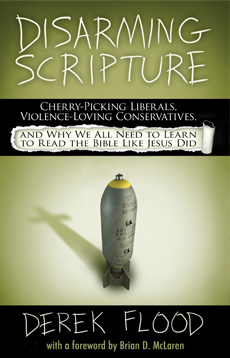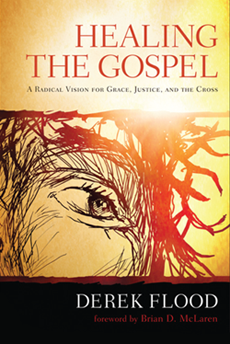Christus Victor questions
Saturday, March 31, 2007
Josh sent me an email with some really great questions in it, so I thought it would be good to answer them here (also it saves lazy me from having to think of a new post :)
1) In the beginning of your article you state "True justice can only come through mercy." Can you expand on that a little more? It is a powerful statement, and I think it could be even stronger if you unpack it more.
This comes from understanding the two paradigms for justice. In the human legal paradigm of punitive justice, justice is about "quid pro quo", balancing the scales, usually through inflicting punishment to match pain of the harm done. In this paradigm (which the entire Western legal system is built on) mercy is an inaction, mercy means "leniency" and is in conflict with justice which here means "punishment". So mercy (leniency) is in conflict with justice (punishment).
A more biblical view, both in the OT and NT, is justice as a way of "making things right", what we might call restorative justice, or what Paul calls "justification". This entails both the restoration of those sinned against, as well as the redemption of sinners. In this paradigm, rather than inflicting more pain, justice tries to act to right the pain done by sin. The means that justice uses to restore the wounded and justify sinners, are acts of mercy (note that mercy is not passive here but active). Jesus demonstrates this by his acts of healing, exorcism, caring for the least, and forgiveness of sinners. Thus setting right the stain of sin on every level: physical (healing), mental(exorcism), social (the poor), and moral(forgiveness). So mercy and justice are not in conflict (leniency and punishment) but rather justice (making things right) comes through mercy (acts of making things right).
2) In your "Paradigm of Penance" chart your reject the idea of Jesus being a perfect offering, implying it is not Biblical. But what about verses like Hebrews 10:14 (among others)?
That's a very good point. Yes I think the idea of Jesus being the "perfect offering" is arguably a biblical one. Although I don't think that what he modeled is the "perfect law keeper" since in the eyes of the religious authorities he was seen as scandalous, rebellious, blasphemous. Jesus because of his association with sinners had a reputation as a drunk, a glutton, and a "friend of sinners" (which back then was like calling some one a "friend of terrorists" today). Jesus in being sinless actually needed to appear to be unclean (touching the unclean to heal them by the law meant that you were unclean too). So he does model a perfect sinless life, but that sinlessness actually exposed the corruption of the law and the religious authorities.
So, I think you are right, but we would need to take the understanding of the idea of Jesus as the "unblemished sacrifice" and fit that in with both the Gospel writers presentation of Jesus as "the perfect lawbreaker" and of Hebrews understanding of the sacrifices, which are not about appeasement, but cleansing in order to make holy (which is related to my definition of justice as "making things right" above)
3) I would recommend the book "Evil and the Justice of God" by N.T. Wright. He addresses the idea of Christus Victor. He makes the case that CV should be the primary, foundational way in which we view the cross, and that other views (ones with a more legal approach) find there place as additions to that base.
Thanks, I'll give that a read. And from your explanation, I think bishop Wright is correct that CV be understood as the larger framework which substitutionary atonement (and moral example theory) fits into.
4) Closely tied to the previous comment, it would seem like you make the case the CV is the only way we should view the cross. However, it would seem to me that many of the different theories of the atonement have at least some support in the Bible. Perhaps the cross is just too rich, too deeply nuanced to be reduced to one particular analogy or theory? I do, however, agree with you that CV is the most Biblically-supported and most easily applicable to today's world.
Yes, I think that may be an overemphasis in the essay. What I would say instead is that
A) all theories need to be understood in the context of dramatic narrative (the dramatic and passionate story of God entering into our lives to save us), and of relationship (meaning the point is always that God loves us and "the things we do for love" rather than a legal transaction or some other kind of formalistic approach. It is not just penal substitution that looks bad when understood in a legal context rather than a dramatic/relational one. CV when it is presented as a legal transaction is equally horrid. And BOTH when understood dramatically and relationally can be beautiful.
B) As I said above, CV should be the overall framework for all other atonement theories. Not in the narrow sense of a ransom or victory motif, but in the broad sense of CV saying that the Atonement entails a cosmic victory over us, over sin, over Hell, over our systems, over the law...everything is put under the Lord Jesus. And the redemption is also not only for us, redeeming us both from our sin and the damage of sin done to us, but also a redemption of all of creation, the whole "kingdom of God" picture. This "big picture" version of CV can thus be the general framework of understanding that allows all sorts of other metaphors and views of the Atonement to weave together into a huge colorful tapestry.
Labels: Christus Victor, justice





